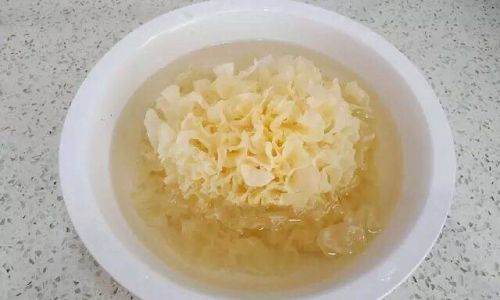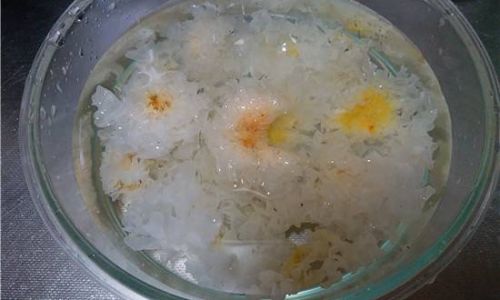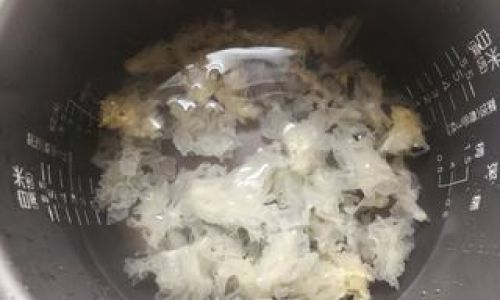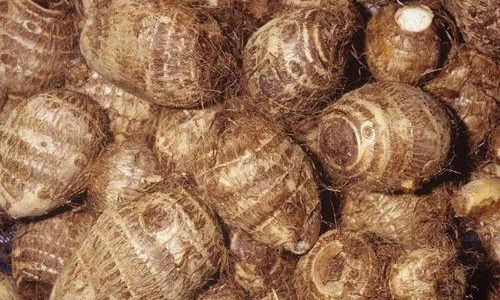Introduction
White fungus, scientifically known as Tremella fuciformis, is a type of edible mushroom that has been cherished in Asian cuisine for centuries due to its unique texture and numerous health benefits. Also commonly referred to as silver ear fungus or snow fungus, it is a popular ingredient in desserts, soups, and various dishes across China, Taiwan, and Southeast Asia. One of the essential steps in preparing white fungus for cooking is soaking it in water to soften it. However, once soaked, many people are unsure how long they can store it before it spoils. This article aims to provide a comprehensive guide on how long soaked white fungus can be stored, the proper storage methods, signs of spoilage, and tips for maximizing its shelf life.
Understanding White Fungus: A Brief Overview
Before diving into the specifics of storage, it’s crucial to understand what white fungus is and why it requires soaking. White fungus grows on dead trees, primarily in tropical and subtropical regions. It has a jelly-like texture when cooked and is often used as a thickening agent or for its gelatinous mouthfeel in desserts like white fungus soup or sweet soups with red dates and lotus seeds.

Nutritionally, white fungus is rich in dietary fiber, polysaccharides, vitamins, and minerals. These components contribute to its various health benefits, including immune system support, skin hydration, and aiding in digestion. However, its tough, dried form necessitates soaking before use to rehydrate it and make it suitable for cooking.
Soaking White Fungus: The Process
Soaking white fungus is a straightforward process but requires attention to detail to ensure optimal results. Here’s a step-by-step guide:
-
Preparation: Begin by selecting high-quality dried white fungus. Look for pieces that are dry, slightly translucent, and free from mold or other contaminants.
-
Cleaning: Rinse the dried white fungus under cold running water to remove any dirt or debris.
-
Soaking: Place the cleaned white fungus in a bowl or container and cover it with cold water. The water should be clean and fresh to avoid contamination. Soaking time can vary depending on the size and thickness of the pieces, but it typically ranges from 2 to 4 hours. Smaller pieces may soften faster, while larger ones may require more time.
-
Inspection: After soaking, inspect the white fungus. It should have a soft, pliable texture and a slightly translucent appearance. If it’s still too firm, soak it for an additional 30 minutes to an hour.
-
Draining: Once soaked, drain the water and rinse the white fungus gently under cold water to remove any excess dirt or impurities that may have settled during soaking.
How Long Can Soaked White Fungus Be Stored?

Now that we’ve covered the soaking process, let’s delve into the main question: how long can soaked white fungus be stored? The answer depends on several factors, including storage conditions, the initial quality of the white fungus, and how it was handled during soaking and draining.
Refrigeration:
The best way to store soaked white fungus is in the refrigerator. Here’s a breakdown of how long it can be kept under different conditions:
-
Immediately After Soaking: If you soak the white fungus and plan to use it within a few hours, you can keep it at room temperature in a covered container. However, this is not recommended for extended periods due to the risk of bacterial growth.
-
Refrigerated in Water: Once soaked, you can place the white fungus back in its soaking water (changed to fresh, clean water if necessary) and store it in an airtight container in the refrigerator. Under these conditions, soaked white fungus can be stored for up to 2 days. Make sure the container is sealed tightly to prevent contamination and to keep out odors from other foods.
-
Drained and Refrigerated: Alternatively, you can drain the soaked white fungus thoroughly, pat it dry with paper towels, and store it in an airtight container in the refrigerator. This method can extend its shelf life slightly, but it’s generally best to use it within 1-2 days for optimal texture and flavor.
Freezing Soaked White Fungus
If you need to store soaked white fungus for longer periods, freezing is an option. However, it’s important to note that freezing can affect the texture of the white fungus once thawed, making it slightly softer and less firm. Here’s how to freeze soaked white fungus:
-
Drain and Pat Dry: After soaking, drain the white fungus thoroughly and pat it dry with paper towels to remove excess moisture.

-
Portion and Seal: Divide the white fungus into portions that you would typically use for one recipe. Place each portion in a freezer-safe, airtight container or heavy-duty freezer bag.
-
Label and Freeze: Label the containers or bags with the date and contents. Place them in the freezer, ensuring they are not crushed or compressed by other items.
-
Thawing: When ready to use, thaw the frozen white fungus in the refrigerator overnight. You can also thaw it under cold running water, but this method should be done carefully to avoid warming the white fungus to room temperature, which can promote bacterial growth.
Soaked white fungus can be stored in the freezer for up to 3 months. However, for best results, try to use it within 1-2 months to maintain its quality.
Signs of Spoilage
Knowing how to identify signs of spoilage is crucial to avoid food poisoning and ensure the safety of your meals. Here are some indicators that soaked white fungus has gone bad:
-
Odor: Spoiled white fungus may develop an unpleasant, off-putting odor. If it smells sour, musty, or has any other unusual aroma, discard it immediately.
-
Appearance: Look for discoloration, mold, or slimy patches on the surface of the white fungus. These are signs of microbial growth and indicate that the white fungus is no longer safe to eat.
-
Texture: Spoiled white fungus may become mushy, sticky, or overly soft. Its jelly-like texture should remain firm yet pliable when properly stored; any deviation from this indicates spoilage.

Tips for Maximizing Shelf Life
To ensure your soaked white fungus stays fresh for as long as possible, follow these tips:
-
Use High-Quality Ingredients: Start with dried white fungus that is of good quality. This will reduce the chances of contamination and extend its shelf life.
-
Proper Storage Conditions: Store soaked white fungus in an airtight container in the refrigerator or freezer to prevent exposure to air, moisture, and odors.
-
Cleanliness: Ensure all utensils, containers, and surfaces used for soaking and storing are clean to avoid cross-contamination.
-
Prompt Use: Whenever possible, use soaked white fungus within the recommended time frame to enjoy its best texture and flavor.
Conclusion
Soaked white fungus is a versatile and nutritious ingredient that can enhance the taste and texture of various dishes. However, knowing how to store it properly is essential to ensure its safety and quality. By following the guidelines provided in this article, you can store soaked white fungus in the refrigerator for up to 2 days or in the freezer for up to 3 months. Always inspect it for signs of spoilage before use and discard any that appear or smell unusual. With proper care and storage, you can enjoy the unique benefits of white fungus in your meals for weeks or even months after soaking.






0 comments